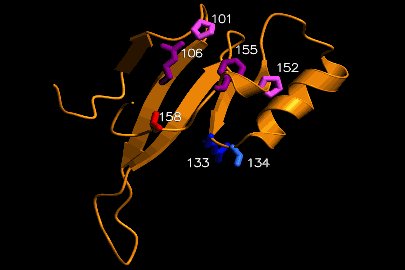Rett Syndrome (RS) is a genetic developmental disorder which occurs almost exclusively in females. It was origionally noted by Dr. Andreas Rett in 1966, after whom the disorder was named. RS appears in an estimated 1 out of every 15,000 female births around the world today, regardless of race and seemingly unrelated to any inheritable factor.
Most cases of RS follow a relatively predictable pattern, even though the severity of the symptoms may vary from person to person. (There are also a smaller number of atypical cases of RS.) In classic RS, four stages have been defined to characterize the disorder:
Stage 1:
Stage 3:
Stage 4:
Although many important factors are still unknown about Rett Syndrome, it is possible to classify it, and several testing procedures can determine if an individual has the mutations in the X-chromosome. A comprehensive list of symptoms has been made to form criteria for a patient to be diagnosed with RS.
The diagnostic criteria for RS were developed by study groups such as the Rett Syndrome Diagnostic Criteria Work Group (1988).
Even though it is a debilitating disease, many girls with RS live for several decades. Sadly, life-threatening complications do arise, however, and are generally the cause of arrhythmia and other heart troubles.
Word Count: 1,217
RS is thought to be caused by mutations in a gene transmitted as an X-linked dominance trait. It is the first human disease that has been found which is caused by defects in a protein. The gene known as methyl-CpG-binding protein 2 (or MeCP2), contains instructions to make that protein, which is vital during the brainís developmental stages. The protein directs the production of certain other proteins by telling their genes when to stop producing. This needs to occur at critical times during development, or the genes remain active at inappropriate times and affect the nerve cells.
Because so few male cases of RS or RS-like symptoms have been recorded, researchers hypothesize that the defect is on the X chromosome. As girls have two X chromosomes, and only one is active in any given cell, a girl with a defective MeCP2 gene would only have half of her cells effected. Some of her brain cells would use the healthy copy and function normally.
However, because boys have only one X-chromosome to draw their genes from, any mutation is far more likely to be fatal, because none of their cells will receive the protein MeCP2. They lack the back-up copy that ensures the healthy development of a certain amount of cells. Researchers believe that the vast majority of males with this condition die shortly after birth instead of living several decades as many females do.
People who have Rett Syndrome generally develop normally for about the first six to eighteen months of their lives. Many reach expected milestones such as using short words, smiling spontaneously, and finger feeding. However, anywhere from five months to three years, head growth begins to slow (acquired microcephaly), and after eighteen months other abnormalities begin to manifest themselves. The children may be slower to acquire new skills, or cease to acquire new skills completely. Other early abnormalities include a decreased amount of eye contact, increasingly diminished muscle tone (hypotonia), and inattentive behavior.
 Stage 2:
Stage 2:
Between the ages of one and four years, affected children lose previously acquired skills at various rates; some suddenly, some gradually, and some incrementally. This is known as developmental regression. Often by the age of three, spontaneous use and control over the hands has been lost, as well as any rudimentary speech skills. One of the characteristics of RS that begins during this stage is distinctive, uncontrolled hand movements that are performed almost continually during waking hours. (It does not continue during sleep.) Bruxism (the involuntary grinding, gnashing, or clenching of the teeth) is also often prevalent, along with ineffective chewing movements. Children with Rett Syndrome slowly lose more and more of the consious control over parts of their bodies, leaving them uncoordinated and unable to perform most voluntary movements, a state known as apraxia. This also affects balance and presents difficulties in making the actions required to walk (gait apraxia.)
Other symptoms may include respiratory dysrhythmia (visible during waking hours only), and hyperventilation.
Around mid-childhood, and occasionally earlier, say from two to ten years, the developmental regression ceases, and the symptoms tend to stabilize. However, generally before eight years old, scoliosis develops.
While some girls remain in the stable stage, and may accomplish a few developmental gains, such as an increased attention span and slight improvements in communication skills, others deteriorate throughout their teenage years. These RS patients develop increasing difficulties with their motor skills, and may lose the ability to walk altogether. Increasing muscle weakness may also occur, as well as spasticity or joint contractures.
Symptoms and findings required for a diagnosis of classic RS:

For more information on Rett Syndrome, see the documentary sponsored by Julia Roberts, called Silent Angels.
